SEARCH






|
|
|
|


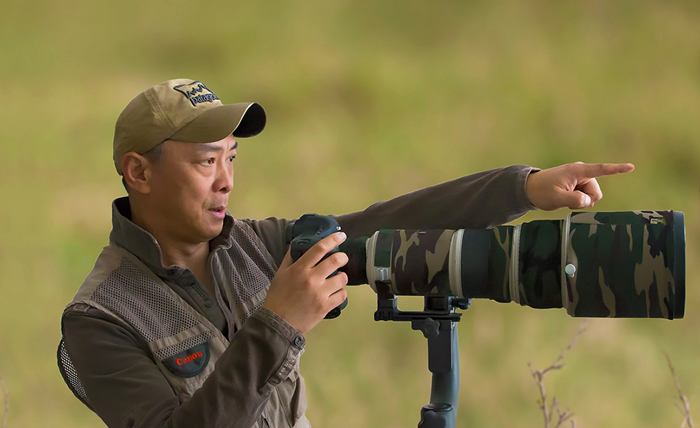
Wildlife photographer Jeffrey Wu
Introduction
In the middle of March 2012, I received an email from my friend, photographer John Fan who is now a member of the 1X curator team, asking whether I was interested in forming a photography group with him and Yiming Hu so that we could more effectively share and exchange our ideas and experiences in photography.
As a result from this discussion, the photography team 4Aperture was established consisting of8 Chinese nature and landscape photographers from North America (USA and Canada) and Australia. In spite of a diversity of focuses and styles amongst 4Aperture members, there is a shared passion for nature and landscape photography.
Over the years, 4Aperture photographers have been pushing the boundaries in the world of nature and landscape photography. Their explorations have reached many remote places: from North America’s Rockies to New Zealand’s Alps; from Europe’s Dolomites to African plains; and from the far west regions of China to the two Poles of this planet.
1X audiences may still not be quite familiar with the name of “4Aperture”, but they most likely would have seen many stunning 4Aperture works. John Fan and myself are relatively active on 1X, and some other 4Aperture members have also published their works on 1X gallery from time to time.
When people view the works created by 4Aperture, they may easily observe that its members are very different from each other in terms of the photography subjects as well as individual styles and approaches. This diversity is actually an iconic feature that enables 4Aperture’s photography to stand out from many other photography groups in the community.
For some time now, I have been thinking to introduce the 4Aperture team to our 1X audiences. In this article, I will start this effort by conducting an in-depth interview with 4Aperture photographer Jeffrey Wu.
Jeffrey Wu is a Chinese Canadian professional photographer focusing on wildlife. In recent years, he has been the lead person in organizing and promoting 4Aperture’s activities on the international photography scene. In this interview, we will have an opportunity to better know this outstanding wildlife photographer from various angles; from his stunning wildlife images, personal photography philosophy, to his extensive Africa adventures. I believe Jeffrey’s photographs and story will be a great inspiration for many of us.
Interview with Jeffrey Wu
Hi Jeff, glad to see you back from Africa, and thanks for agreeing to have this interview with 1X. To start with, can you tell us how you got into photography? I know that before you moved to Canada, you worked as an engineer in the aviation industry in China. Did you ever start to take photographs during that time?
I actually have gotten involved with photography since I was 7 years old, my mother was a professional photographer, and my father was an Air Force officer. He moved a lot with his division in my childhood, so during school summer holiday my mother often had to take me to her workplace which was a small studio with only two employees. I would help doing something like cutting borders of pictures, feeding wet paper into the drying machine, etc. For a 7-year old boy in the darkroom, watching film develop and seeing a blank paper being soaked in chemicals to gradually show an image of people and things was very magical. I was hooked by it and photography has since become my lifetime passion.
After college I worked as an engineer in China Aviation Oil Supply Corp. At that time, film camera was very expensive in comparison to our income. I remember in my first month’s salary, I started saving to buy a SLR camera. It took me 8 months, and I have never stopped taking photos ever since.
In the 4Aperture group, you are one of three members who have made photography as their professional career. What was the passion that made you decide to become a professional photographer?
The love of nature and fascination of telling the amazing story of nature drove me to become a pro photographer. Before I became a pro, I owned a small business in Toronto, Canada and I was good at running the business; but eventually everyone must ask himself or herself the question: what do I really want in my life? I remember in March 2013, after 3 weeks of photography in Kenya, on my flight back to Canada, I suddenly felt this urge to go back again! That was the time I knew what I love the most in my life and I must follow my heart. I sold the business and since then I spend 6 months per year photographing wildlife in Africa and other places in the world. Among all things I have done in my life, photography simply brings me the most gratification and sense of accomplishment.
From your personal experience, what are the most essential characteristics a person should possess if he/she wants to pursue wildlife photography as a profession?
I would say two things I think are mostessential or critical to a wildlife photographer.
Number one is the ability to interprete scene in the wild, and instantly recognize and capture the particular part of the scene that delivers maxim story-telling / emotion-provoking value of animal’s behaviour, conflict and interaction.
Number two is the ability to use appropriate language of photography to show these stories and emotions in an artistic way to viewers.
I started to notice your works from the images you took on wild birds. Nowadays, shooting photographs of birds is probably one of the most popular wildlife photography activities. In fact, in the 1X gallery, we can see quite a lot of such pictures. But I also noted that many such images are similar in some aspect.
How do you evaluate a photograph in this genre? What are essential criteria for taking a great wildlife bird image? When I look at your profile, I realize that you have taken so many different types of bird images. I think they are also from many different places in the world. So far, how many species of birds have you taken pictures of them, and from how many different habitats?
In recent years, wildlife photography has advanced at a very fast pace along with digital camera technology. I have seen a motionless bird portrait image with exquisite details that won a wildlife photography competition 5 or 6 years ago, but now can only score 6 points in a salon competition. A portrait of a bird will not win unless it has an insect in its beak or a mouse in its talon.
A good bird portrait image should not only show the physical appearance of the species but also show the mood and behaviour of the species. The best bird photography images are those showing intensive action or conflict – the drama of the image creates strong visual impact and that is what makes them memorable.
I started my wildlife photography career by photographing birds. I have been to about 15 different habitats in Africa, South and North America, Europe and China, and photographed around 80 species of birds in total.
Besides the two Poles, Africa is the only continent I haven’t travelled to so far, but it has always attracted me since I started photography. I understand that Africa is an ultimate ground and paradise for wildlife photography. In recent years, you have frequently travelled to Africa for your photography. This year, you stayed 6 months there.
May you share with us your latest Africa adventure? What is the primary motivation for you to stay so long in Africa? What types of animals or scenes do you mostly want to capture? Comparing with other wildlife photographers who are taking images in Africa, how do you view the differences between you and others?
This summer the great migration in Kenya is the best in recent years, the intensity of herbivores also triggered high concentration of predators and we had lots of actions. There were two scenes that were most unforgettable; photographing a herd of 20,000 wildebeests crossing Mara River in the morning from a helicopter in the air was simply spectacular and awe-inspiring, that crossing lasted 3 hours!

The second scene depicts 12Thomson's gazelles attempting to cross Mara River and being intercepted by crocodiles, 4 gazelles were killed. Seeing a half-ton Neil crocodile taking on a Thomson's gazelle in the water and split it into two pieces in one bite was shocking and fearful, the power and brutality it delivered was unbelievable.
My favourite wildlife subject in Africa is big cats: lions, cheetahs, and leopards. The scene I want to capture most is a chasing and hunting scene, especially that split second before impact – the moment of building up energy and suspension that leaves the viewer with a space for imagination.
From the very first time in Kenya, I have always tried to use my images to express how I see Africa – a beautiful grand stage where all animals are the actors performing a role in a great drama. My African images are mainly two kinds:
A: I am constantly looking for interactions between animals: fighting, hunting, courting, caring – those dynamic and exiting moments. I hardly photograph a static animal (unless it has a mood). As result, these images are action oriented, emphasizing on the story telling side of a scene.
B: “Animalscape” basically is a landscape image with animals as the foreground point of interest. The existence of wildlife is essential in these images but not necessarily showing details of each individual animal, and when you take enough of these images, they form your style.
I recently read your new book “Beauty of the Wild” (note: in Chinese《野性之美》). I feel that this is one of the most comprehensive books for wildlife photography. In this book, through your first-hand experience, you describe three bodies of knowledge in great details: the general principles and techniques for wildlife photography; field photography practices in specific African places; and the post-process approaches for wildlife images.
 the book cover
the book cover
May you share with us your experience of writing this book? For example, what motivated you to write such a book? For someone who is devoted to wildlife photography, what would you expect after a person read your book?
In 2014, I went back to China to hold photography lectures in many cities, and I found that the number of wildlife photography enthusiasts in China was huge, but their perceptions on wildlife photography and techniques were somewhat out-dated. There is almost no reference book for wildlife photography in the Chinese market. I have lived in Canada for 23 years, my main photography activities are here, and I really wanted to contribute to bridging the gaps between the West and China in terms of photography.
I wrote the book in 6 months. Choosing the images was the easy part, as through the years I have taken thousands of usable images. The hard part was trying to write in a way that a beginner who is new to wildlife photography could read and understand, and therefore use these concepts and practices right awaybecause this book is intended to be a practical wildlife photography field guide. The book received good reviews as the very first comprehensive modern wildlife photography teaching book for the digital era that was written in Chinese language.

When I first saw the following image on 1X, I was so amazed with the hunting scene you captured in Africa – this was one of those wildlife pictures that really triggered my emotional response. May you tell us the story behind this image? When was it taken and how did you capture such a dynamic hunting scene?
“No Escape” was taken in Masai Mara National Reserve, Kenya in February 2015. The image shows two cheetah cubs trying to catch a wounded young impala. These are 2 of the 4 cubs of a cheetah name Malaika who I have been following for two years. They were about 7 months old then. Very often, cheetahs will not kill a prey, but just corner them to let cubs practice their hunting skills, and this is one of those scenes. It is cruel but necessary because this is how cubs learn to hunt and survive when they grow up. The truth of the fact is that 1 in every 5 cheetah cubs will grow to become an adult. Their mortality rate is very high, and that is the reason in the 3000 square kilometres land of Masai Mara, there are only 31 cheetahs. It is the most concentrated wild cheetah population in the world.
Like all other forms of art, photography often provokes emotional responses to its viewers even though these emotions are sometimes raw and not pleasant. This is an example, the innocent and helpless look of the impala, and the predatory and vicious look of the cheetahs will provoke a sense of sadness and feeling of sympathy in its viewers – you may not like it, but you will remember it because you are emotionally responding to it.
Wildlife photographers use images to tell the stories of nature, and the biggest story of nature is the circle of life. Cruelty and brutality are also a very important part of these stories, and part of the raw beauty of the wild.
We followed this cheetah family for two days. Predicting the escape route of the impala and getting ahead of the action is the key tocapturing this moment head on.
I have noticed that black and white (B&W) images are quite often in your wildlife photography works. I think for certain circumstances black and white images could be more powerful and effective than colour ones to express photographers’ visions.
May you explain how you generally decide an image should be colour or black and white in your photography practice? Are there particular rules for making such decisions?
I think photography is one of those subjective art forms. Even in wildlife photography, we should truthfully but subjectively tell a story of an objective nature world by using personal perspective, composition, focal length, shutter speed, aperture, and choice of background and timing of photographing, etc. The wildlife world is objective but wildlife photography should be subjectively deferent in-line with a photographer’s own interpretation and style.
Black and white photography is one of my favourite ways to tell those stories, especially since it adds mood to these scenes. Black and white photography in definition is a subjective expression of an art form – we only use shape and light to elaborate a coloured world – and you are right, B&W images are more powerful in terms of expressing a photographer’s vision and emotional state. For example, the coloured version of this image below, “A Pre-historical Memory”,is quite bland, but the B&W version conveys a strong sense of loneliness.
There is no rule of thumb for what kind of scene should turn into a B&W photograph. In general, I find low contrast scenes, overcast cloudy skies, rough surfaces with lots of texture (elephant skin), and animal’s with a grey body colour or black white skin pattern (like zebra, wildebeest, giraffe) are more suitable to turn into a B&W photograph.
While I am definitely a wildlife lover, I am a person who mainly shoots landscapes. But I guess there might be some critical differentiations in terms of post-process methods between wildlife images and other types of images.
“Jeff’s Workflow” is a post-process technique you developed over the years. Is this a kind of post-process technique specifically for wildlife images? What are the main differences between this technique and other existing post-process techniques?
Wildlife are most active in the morning and late afternoon, and to freeze actions we have to use high shutter speed. The high ISO images are unavoidable. “Jeff’s Workflow” is a digital workflow that applies to low light, high ISO photography environments. Beside wildlife photography, it also can be used for low light indoor photography like weddings or street photography. The fundamental theory of this workflow is “Exposing To The Right” also known as ETTR. I think beside exposing to the right, the biggest difference in comparison to other’s post-processing technique is that I use multiple noise reduction treatment to a single RAW file, then combine them into a single file in accordance with an image’s brightness level.
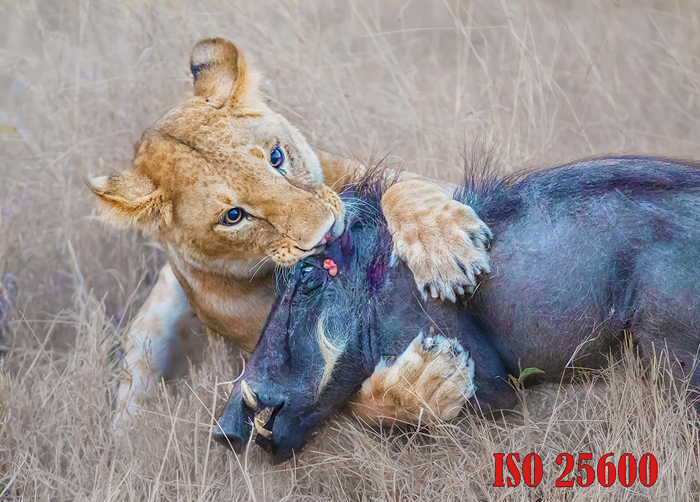
You became a professional wildlife photographer not long ago. I think you are quite successful from this move: you have published a wildlife photography book; are increasing your exposure both in China and on the international photography scene; and more photography enthusiasts are keen to join your Africa wildlife photography workshops, which is important for a professional photographer.
So may you share with us what are your personal goals in your wildlife photography in the next few years? If someone wants to devote to wildlife photography, do you have any suggestions for him/her ?
In the next 10 years, I will still be going back to Africa for at least 5 – 6 months per year. My goal in wildlife photography is to capture as many amazing nature stories in the wild as possible in the African continent when I am still physically able to, and lead workshops in Africa to teach and guide more wildlife photography enthusiasts to help them achieve better wildlife photography.
For those who want to further their way into wildlife photography, I think there are three things one should pay more attention to:
Do your homework; study the habitats and species before your trip, the more you understand wildlife behaviour, the better you can predict wildlife movements, and the bigger the chance you will get a shot.
Instead of “Hit and Run” style of shooting, stay in a habitat longer from morning to evening, work it through. This is the best way to do in-depth wildlife photography.
Know your gear, especially the limit of your camera; modern digital cameras are designed to photograph in the most complicated and extreme light conditions, and autofocus systems are very advanced, understanding how it works and setting it up appropriately will optimize your chance of capturing amazing images in difficult conditions.
Thanks very much Jeff, this interview is really interesting and inspirational. Wish you all the best.
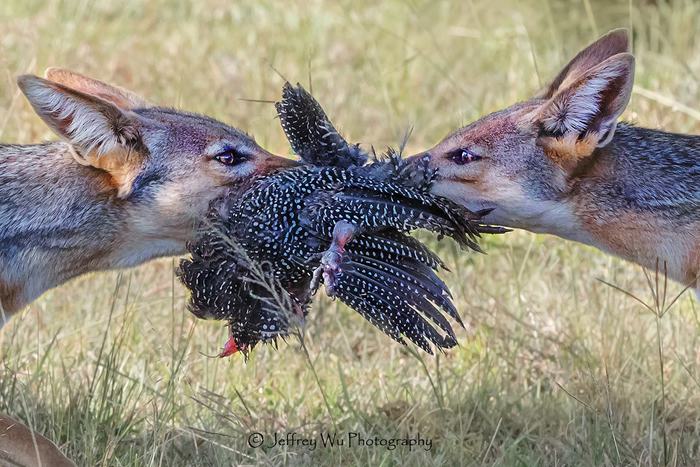
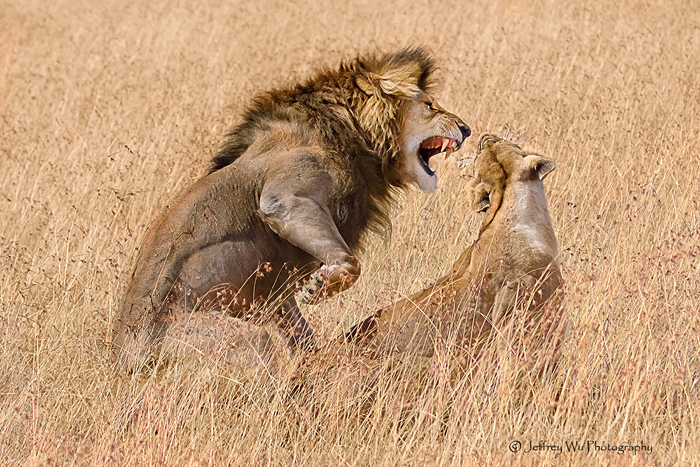
Jeffrey Wu Photography Bio:
Jeffrey Wu is a professional wildlife and nature photographer based in Toronto, Canada. He has been a judge of "Nature's Best Photography Africa" since 2016 – One of the most prestigious nature photography competitions of the world.
In June 2016, his images were invited to join United Nation 2016 “The Spirit of Eurasia” exhibition in New York, where Jeffrey had presented a lecture on the topic “The subjective expression of photography”. This was also the first photographic lecture ever held in UN New York headquarter.
Jeffrey Wu is specialized in high ISO, high speed and low light shooting scenarios, which are the most critical in wildlife photography. He created the well-known high ISO image processing workflow – “Jeff’s Workflow (in Chinese)” that has been shared and downloaded over 500,000 times on the Internet.
 | Write |
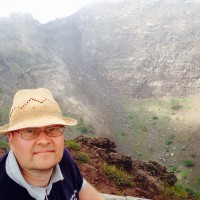 | GS wild life that have something to tell is one of the best!
see-u sepp |
 | Ziming Zheng Congrats Jeffrey! |
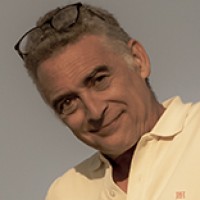 | Martin Zalba Fantastic work and amazing photos. Congrats Jeffrey! |
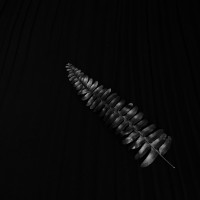 | legoudan admire |
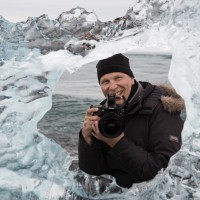 | Marc Pelissier PRO Great article with just fantastic Jeffrey's work. I enjoyed going through thee fantastic images which are not "just" great nature shots but also extremely artistic |
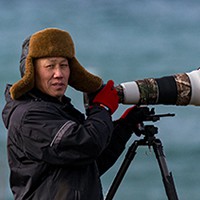 | Cheng Chang Good questions and awesome answers. |
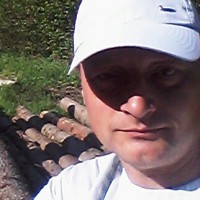 | . Personally, I was wondering how much waste was captured the image management :) |
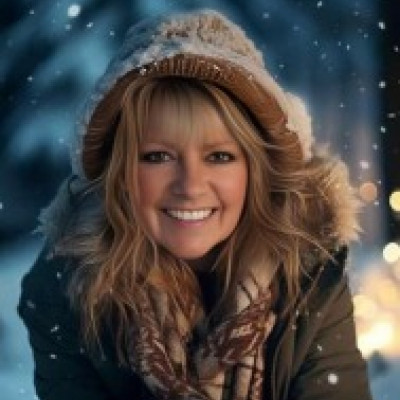 | MJoão Ferreira PRO Amazing photos. My opinion is you master these shots as aesthetically as technically, relating the background light in contrast with the accuracy of the smallest details.
Congratulations. Best regards. Mjoão. |
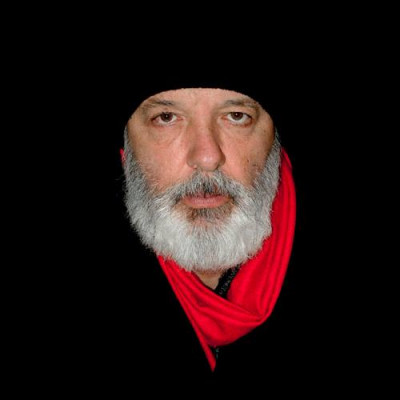 | Massimo Della Latta Splendid |
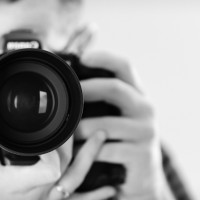 | Graham Daly Great article that is full of very interesting and useful insights into the world of Wildlife Photography, along with a collection of outstanding images. Those high ISO files are amazing...virtually no noise! Excellent.... |
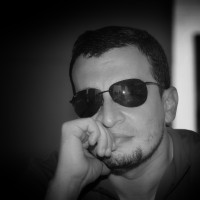 | Ahmed Thabet PRO Am impressed dear Jeffrey, great work |
 | Yvette Depaepe CREW I fully agree with Ralf except that I didn't have the pleasure to meet you, Jeffrey ;-) My admiring compliments and thanks for this most interesting interview. Big thanks to Yan Zhang for leading it and for the information about the 4aperture team. Cheers, Yvette |
 | Ralf Stelander FOUNDER Your work is truly sublime Jeffrey and it was a great pleasure to meet you in real life. We should catch up soon! |